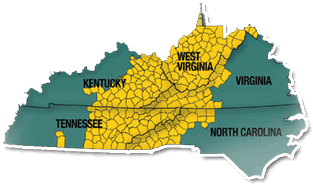You have /5 articles left.
Sign up for a free account or log in.

Appalachian College Association
The Appalachian College Association could have disbanded.
The 35-member group of private liberal arts colleges and universities was providing a set of cornerstone services to its members -- professional development for faculty and staff members as well as a central library overseeing digital collections and group purchasing, databases and a reciprocal use program. But there was a sense that the association, traditionally focused on improving its members’ academic quality through programs like faculty fellowships and research grants, was drifting.
It had burned through several presidents and interim presidents in the years since longtime president Alice L. Brown retired in 2008. Some worried member engagement was low. Although the association has a sizable endowment, the foundations that had previously funded it were slipping away.
On Monday, the association’s Board of Directors -- made up of its member presidents -- approved a new mission statement and strategic plan. The move was geared toward having the association focus on serving home communities in its five-state region across the Central Appalachian Mountains in Kentucky, North Carolina, Tennessee, Virginia and West Virginia. The new plan calls for the association to focus on improving education at all levels in the area and to convince students that private higher education is within their reach.
Early on, that will translate into work to bolster K-12 education throughout the region, according to presidents of several member colleges. But the association has a long way to go if it is to fulfill its new direction. It still plans to hire a new president, consider a branding change, seek new sources of funding and build programs.
Those steps will be worth watching in an era when private liberal arts colleges are under increasing pressure from all sides. The Appalachian College Association members are located in one of the most difficult regions in the country for higher education, one that is depressed economically, declining in population and facing steep social challenges like the opioid epidemic. Many of the member colleges are saddled with financial challenges of their own and doubts about the value of liberal arts education.
Questions remain about what’s to come. Will the different colleges connect more closely to take on major problems in the region, or will they ultimately scatter, leaving many to fight for survival on their own individual terms? Is the new direction attractive to foundations and sources of funding? Is it the right direction, or is it mission drift?
The change is a significant shift in focus, according to those who led it. David Olive is the president of Bluefield College, in Bluefield, Va., nestled along the state’s border with West Virginia. He was the chairman of the association’s Board of Directors for the last two years, leading it as it drafted the new mission statement and plan.
“We are making a commitment not only to changing the lives of our students who come to study our campuses -- some of those coming from Appalachia and some not -- but really being focused on having a significant impact in our communities beyond our campus boundaries,” he said.
At this point, the effort is being left “somewhat vague” so member institutions can pilot their own programs depending on local conditions. The economy is different around Bluefield than it is around Knoxville, Tenn., where another association member, Johnson University, has a campus, Olive said.
Member institutions also face significantly different circumstances. For instance, Wheeling Jesuit University in West Virginia this year offered early retirements and struck a deal to sell its campus to the local Roman Catholic diocese, efforts to balance its budget. In contrast, Berea College in Kentucky has a large enough endowment that it does not need to charge its students for tuition.
Broadly, however, many recognize that they face a common set of issues, according to Berea’s president, Lyle D. Roelofs.
“You can’t be in this part of the world and not realize that things are changing in the wrong direction fairly rapidly,” he said. “Recent political developments, recent economic developments -- coal versus natural gas -- all of these things make the situation bleak on a fairly short time scale.”
Some Appalachian College Association presidents said a boost to regional K-12 education could help them with enrollment or relieve some financial pressures in the future. Better-prepared students could limit the need to spend on remediation, for instance. Efforts could also create a pipeline for more students to enter college.
But none described the idea as a primary solution to enrollment and financial challenges. Many didn’t agree on the scope of future financial challenges they will face. But a focus on K-12 education cannot be the solution for a struggling small college, Roelofs said.
“To the extent we make progress on this strategy, we are not actually going to generate a whole lot of paying customers for the schools in Appalachia,” he said. “That’s because the people can’t really afford education.”
Any solution to the problems struggling small colleges face will have to come from decisions at the national and state level, Roelofs said.
Still, the question remains whether a group like the association could help its members band together to face any economic challenges, pooling resources or collaborating more closely. Its former president, Brown, described colleges in the Central Appalachian region as being both fiercely independent and part of a group that is “among the most fragile in the nation.” They are also critically important to their students, she said.
“There is a population of students out there who really need these kinds of colleges,” Brown said. “They are not going to thrive in an environment at Princeton, for example. They are not going to thrive even at the University of Kentucky. They need an environment where people understand them and their culture.”
That’s not to minimize the change in the association’s direction. Faced with a follow-up question about the traditional focus of the association, Brown said it was on strengthening members’ academics.
“The focus of the ACA when it was founded and during my 25 years directing it was on academic quality,” she said in an email. “The ACA provided faculty and students resources that strengthened the academic programs of the member colleges: such as fellowships for faculty to do independent research and study, faculty-student research grants, international study opportunities, and access to library and technology resources.”
Marcia Hawkins, the president of Union College in Kentucky, put the change in mission another way.
“It talked about the association serving the membership,” Hawkins said of the previous mission. “Now we’re at a point where our mission says we are the association. It’s not this outside thing taking care of us. We are it. So how do we make an impact?”
The association doesn’t plan to stop its traditional services like the central library and faculty fellowships. It has a $26 million endowment to support those legacy programs. Colleges and universities also pay membership fees that average about $15,000 per year per institution.
The association’s annual budget is about $5 million, said Anne Ponder, who worked with the association as a consultant as it crafted its new plan and is a former chancellor at the University of North Carolina at Asheville.
Reorganizing association staff and improving governance could help the association do more, Ponder said.
“The idea is that the costs would be a steady state, but there is the opportunity for this new purpose,” she said.
Still, some presidents privately wondered how much individual institutions will buy in to the association’s new direction. Some of the association’s members are heavily dependent on the Appalachian region for students. Others draw from outside the area.
The association’s next step -- hiring a president -- will be critical, said Edwin Welch, president of the University of Charleston, in West Virginia.
“Because of, I think, pressure on presidents and provosts to take care of their own institutions, if you don’t have a strong consortia leader, they won’t come forth, and the organization won’t come forth and be successful and make a difference,” Welch said. “So the leadership of a consortium seems to be absolutely critical to its success.”
At the end of the day, many said the re-evaluation was preferable to drifting with no defined focus or disbanding the association. Olive said surveys indicated members wanted to keep the legacy programs in place while also exploring new ways to work together.
“Institutions who don’t constantly look at redefining themselves and assessing where they are, are going to be in trouble,” said Jake Schrum, president of Emory & Henry College in Virginia. “That’s a step we took. That was a smart step to take.”








